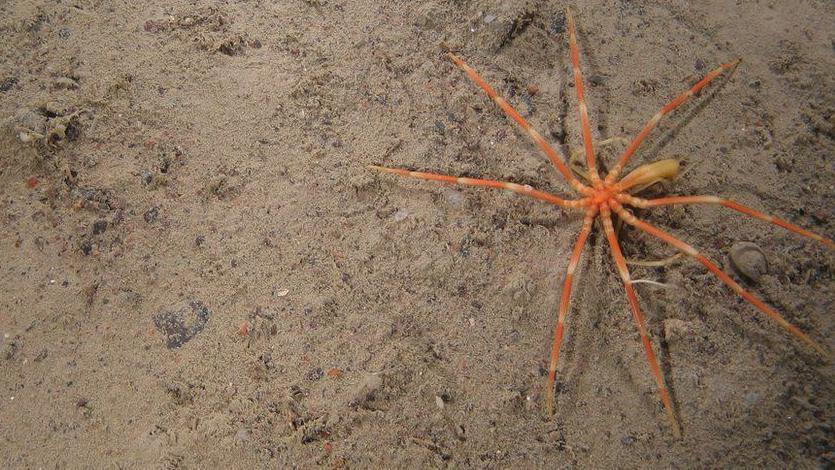Scientists returning to 'cheesy-bottom sponge belt'

Scientists are headed for the area off Shetland as part of their work monitoring the condition of deep-sea habitats and wildlife
- Published
Scientists are to carry out a new study of one of Scotland's most unusual deep-sea features.
The Faroe-Shetland Sponge Belt Nature Conservation Marine Protected Area lies west of the Shetland Islands.
Five different water masses meet in the area, bringing nutrients that help deep-living cold water species to thrive, including sponges, worms and long-lived molluscs called ocean quahog.
The sponges gather in large clusters nicknamed cheesy-bottoms by Faroese fishermen due to their appearance.
Faroese fishermen nicknamed the large gatherings of sponges cheesy-bottoms
The seabed in the area also has rocks deposited by icebergs during the last Ice Age, and there is also a region containing what are called the Pilot Whale Diapirs - which are 70m (230ft) high mounds of sediment.
Scientists say the mounds have sediment that could be 24 million years old.
The Joint Nature Conservation Committee and Marine Scotland are carrying out the research as part of their work monitoring the condition of marine protected areas.
Certain types of fishing - such as dredging - are banned in the areas to protect fragile and rare habitats and wildlife.
The expedition to the sponge belt is to run from 20 August to 6 September. It is the third time since 2012 that scientists have studied the 2,038 sq mile (5,278 sq km) area.